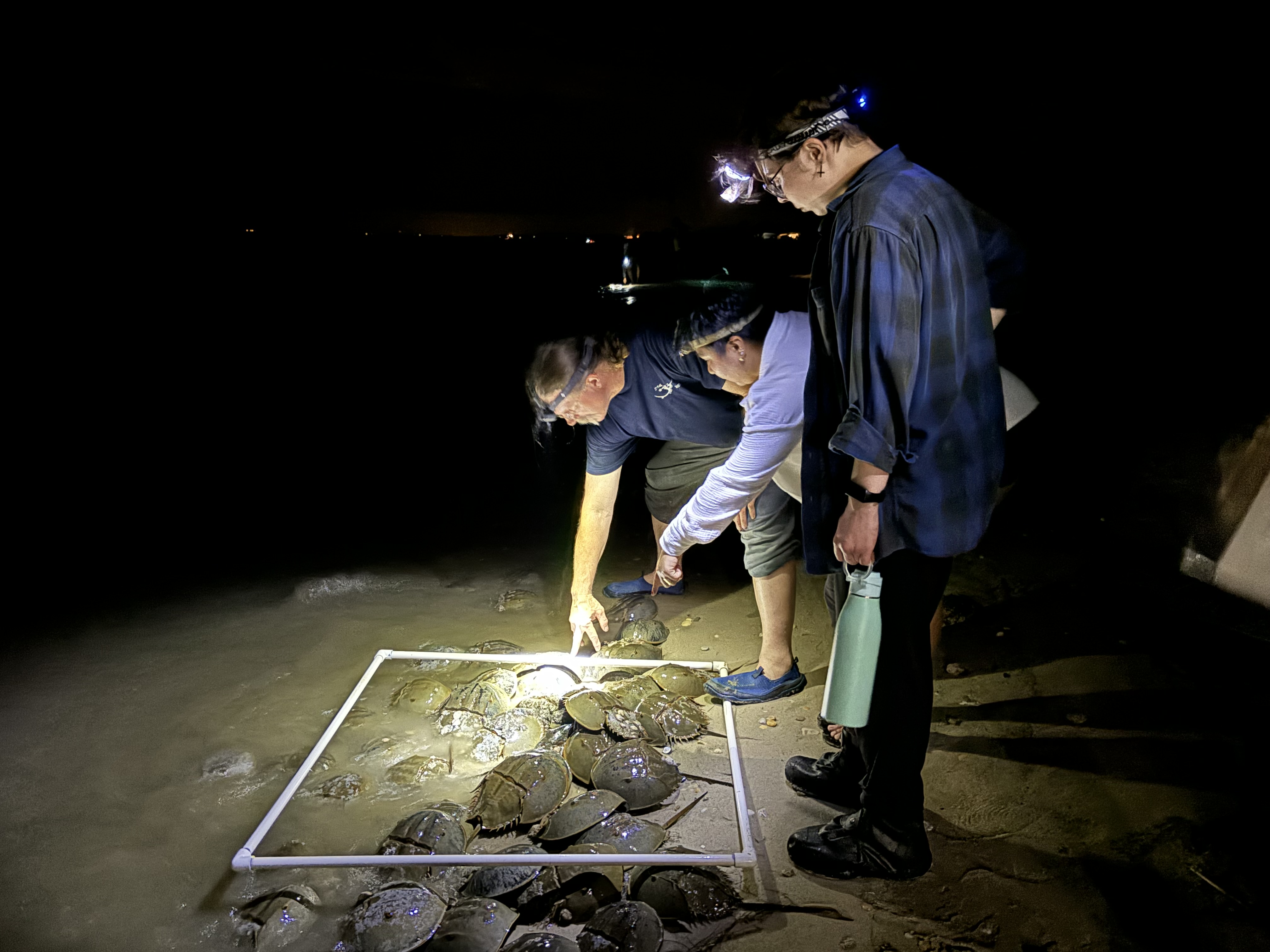
PhD candidate Seleni Cruz and classmates Emma Korein and Lorren Ruscetta traveled to the southern Delaware coast to help count horseshoe crabs as they came ashore in a late-spring spawning ritual that dates back 445 million years. They counted 952 specimens of Delaware’s official marine animal, which is in fact more closely related to spiders than crabs. From their 10 eyes to antimicrobial blue blood, these “living fossils” have a number of bizarre and unique adaptations that make them highly valuable for researchers but also put them at risk of overexploitation, as a Washington Post article, This creature has 10 eyes, legs that chew and blood that saved your life, explains.
